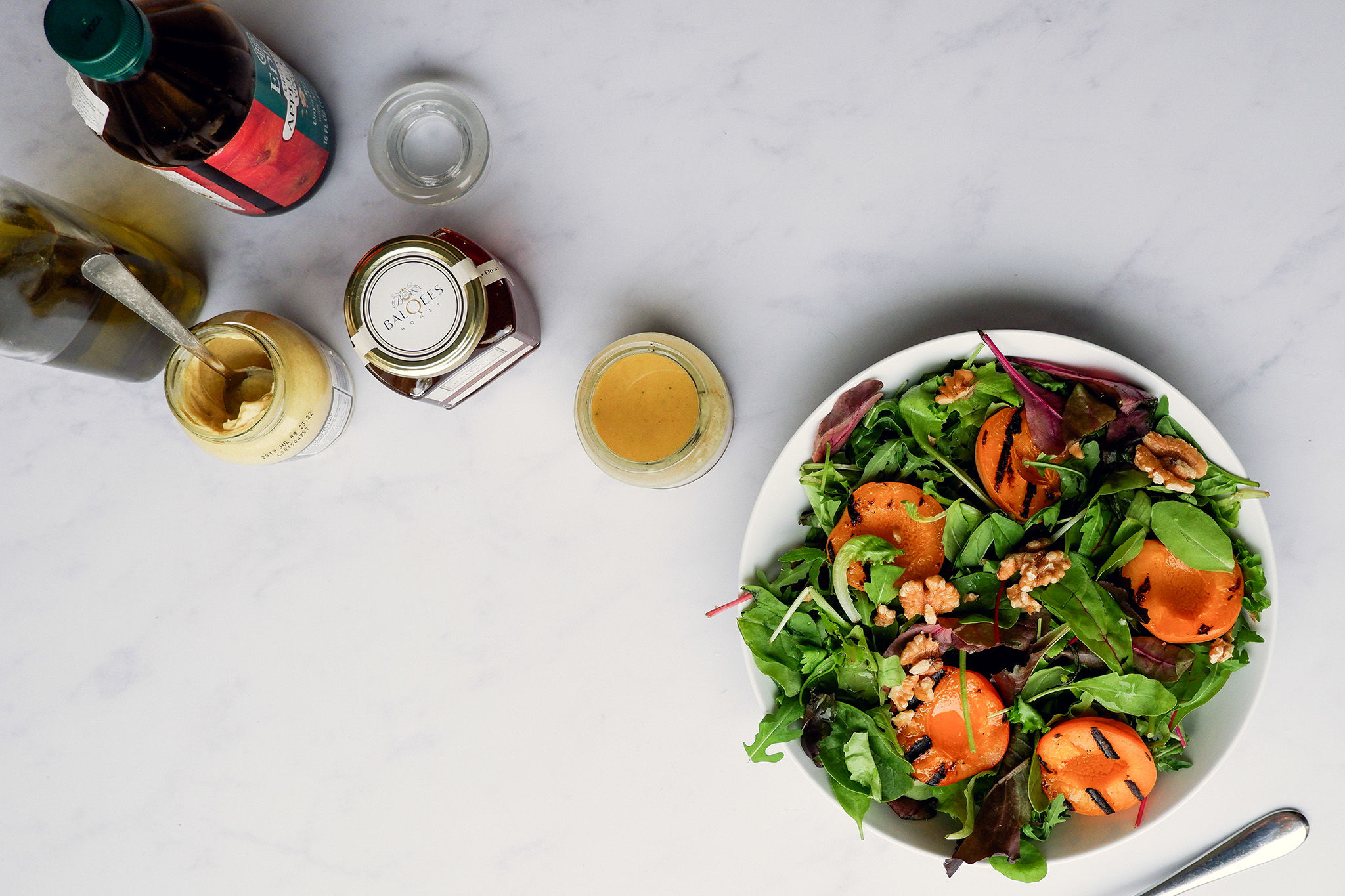
Calling all honey mustard salad dressing lovers (have you ever met anyone who isn’t?). A good salad dressing recipe is the key to great tasting salads in the summer. Dressing is like the icing on the cake, it can unite all the flavours and take a salad to a whole new level.
However, some dressings can sabotage all those crunchy, vitamin-laden, healthy ingredients by being not so virtuous. Refined sugar, processed honey, corn syrup and caramel are often added in liberal amounts to shop-bought dressings (especially the light versions). Making your own at home is super easy and with raw honey in the mix you add a delicious flavour, plus a liberal helping of health-promoting enzymes.
Where to start? The classic salad dressing base is a combination of oil and vinegar. The important thing to get right is the acid to oil ratio. The most common proportion is one-part vinegar (or other acidic element like lemon juice) to three-parts oil.
Olive oil is a classic and, as it’s the main ingredient in the dressing, always go for the best quality extra virgin olive oil. You can add depth with sesame, avocado or walnut oil, either on their own or mixed with the olive oil. Balsamic vinegar and apple cider vinegar are two favourites to always keep in your kitchen. There are many different flavours of vinegar, such as oregano-infused, but you can always add your own herbs to the dressing if you have the basics. Use a vinegar with a higher level of acidity (the label on the bottle should say 4-7 percent) as it gives a more pungent kick to the dressing.
An emulsifier is an ingredient that binds the oil and vinegar together to make a coherent, creamy dressing adding another distinct flavour. Mustard is a traditional and gives your taste buds a bit of a kick. Use Dijon for a smoother texture and flavour, whole grain for more crunch or even English mustard for a peppery hit (don’t overdo it). For more depth and a salty, umami flavour miso paste is excellent especially if using crunchy Asian vegetables in your salad. Tahini makes your dressing smooth, rich, nutty and irresistible.
Something sweet is a crucial addition to a great salad dressing. It acts like another seasoning along with oil, acid and salt and brings all the flavours together. But imagine you’ve just put a beautiful bowl of delicate salad leaves, crunchy crudités or green, fibre-full chopped kale on the table. Why douse it with something containing a sweetener that’s, at best, empty of nutrition or even damaging to your health? Using raw honey gives you a powerhouse of health-promoting nutrients and enzymes (over 200) and a deep, caramel or floral flavour which will help to make a dressing that will liven up even the most boring of veg.
A dressing is like a seasoning for your greens, so getting the balance right is key. Instead of dipping a finger or spoon in to taste, take a lettuce leaf or one the ingredients in your salad and try it this way. Taste and add a bit more oil, vinegar or seasoning until it tastes just right.
Your salad dressing can be used in a variety of ways so make extra as it’s not going to go off (unless there are fresh ingredients like herbs or onion, then it should be stored in the fridge). As well as transforming salads, your dressing can be used as a dip for crudités, a sauce to spoon through roasted vegetables or even for serving with grilled meats from the barbecue.
Make the dressing in the bottom of your salad bowl. Add the salad ingredients on top starting with the heaviest. Toss lightly and serve immediately. It's easy and saves on the washing up too.
Coming to the end of your honey? Add your oil, vinegar and mustard directly into the jar to use up every last drop. Nothing is wasted and you get a nice glass jar as storage for your dressing.
A classic favourite that adds sweetness to crisp salad leaves healthily
IngredientsI hope you enjoy this recipe and experimenting in the kitchen with raw honey and your own combinations of salad dressings. Let us know how you get on.
Sign up for exclusive offers, recipes and the latest raw honey news.